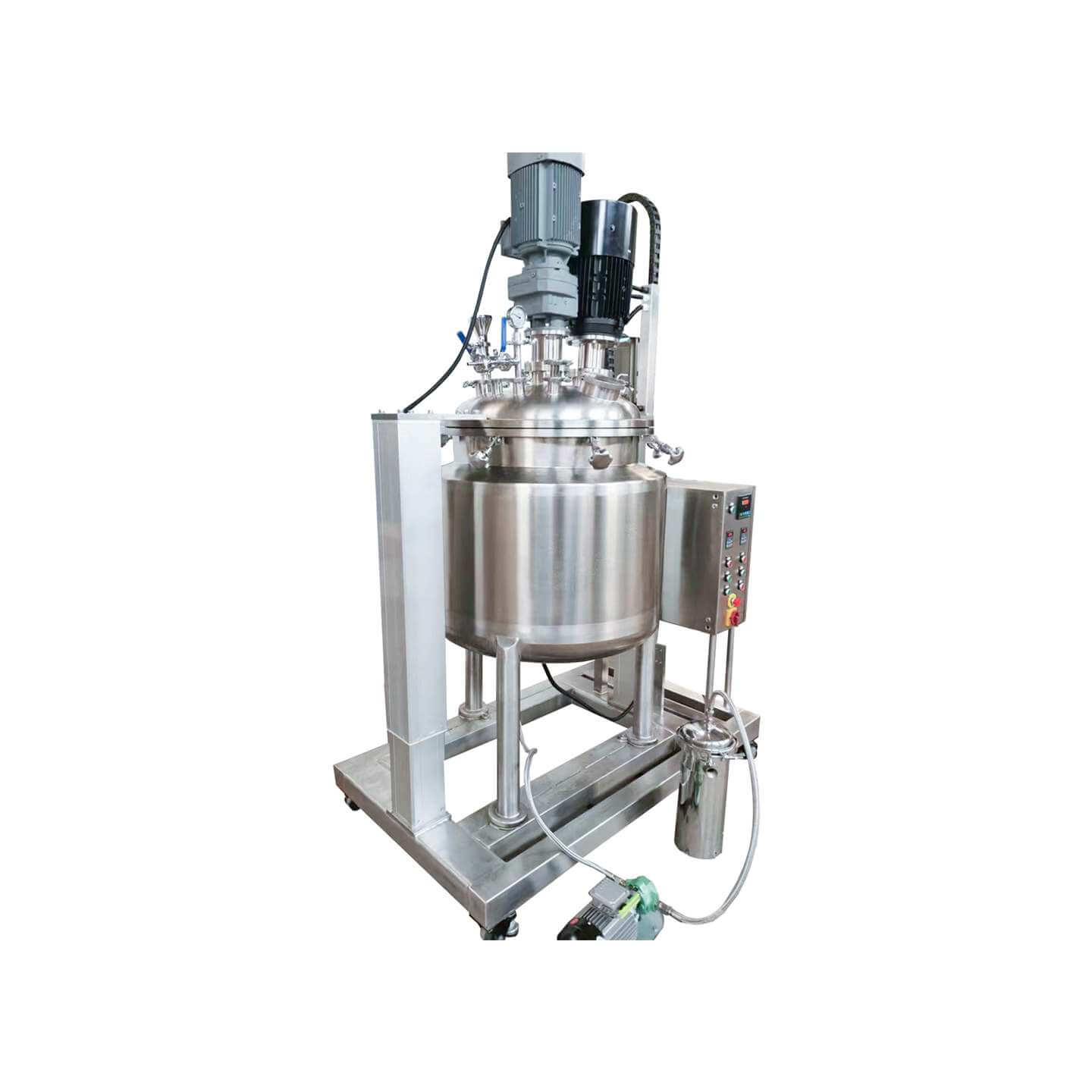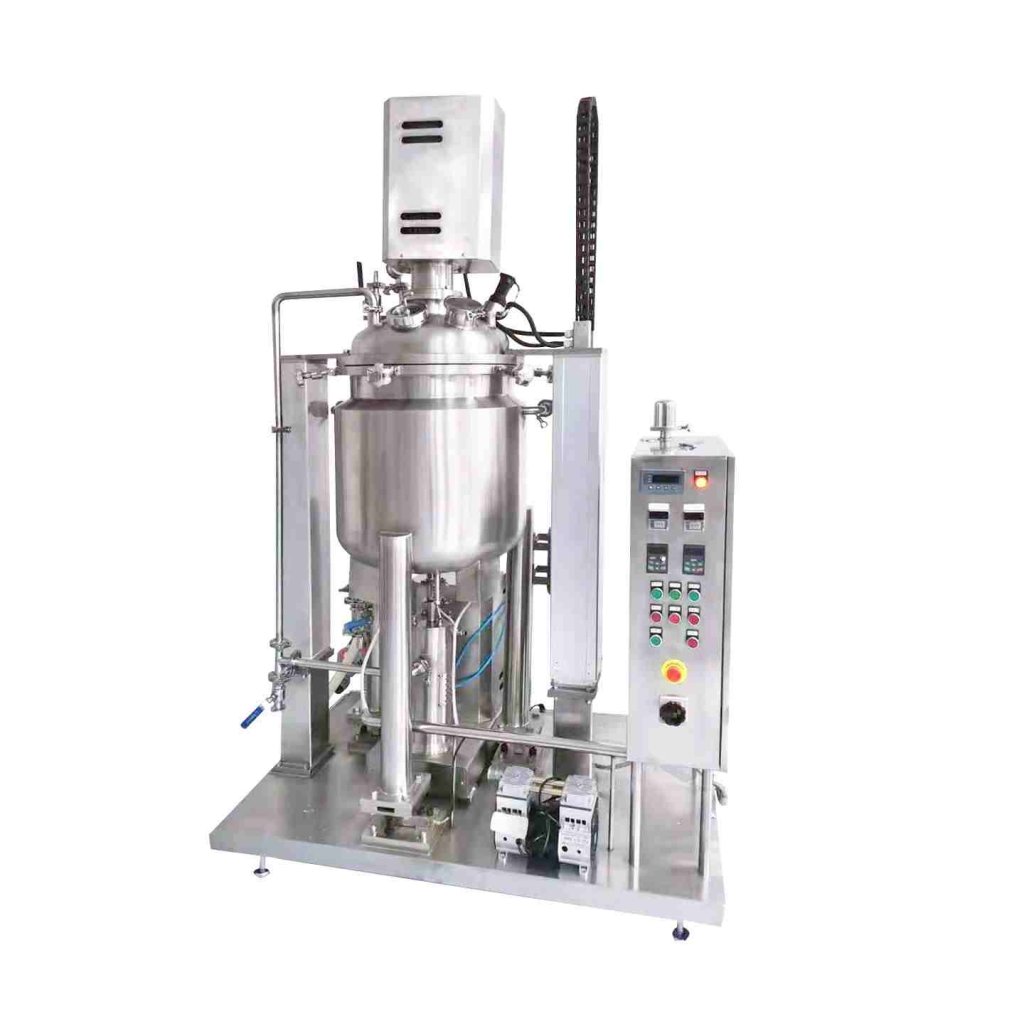

Laboratory Reactor
Laboratory reactor: used in the chemical industry, pesticide, paint, and other fields
Material
glass, stainless steel (316, 304), carbon steel, others
Capacity (L)
10-10000+
Mixing system
anchor, paddle, frame and others
Heating system
electric heating, oil heating and others
The laboratory reactor is small in size, beautiful in appearance, light, and fast in installation. It is composed of a pot body, pot cover, stirrer, jacket, support and transmission device, shaft sealing device, etc. The type of stirring device, rotation speed, sealing structure, heating method, etc. are produced.
Request a quoteThe laboratory reactor kettle body and the kettle lid are sealed using a triangle line seal, which has a particularly long service life. It mainly uses two open snap rings to hold the main seal so that it can rest freely on the shoulders of the kettle body and pot lid. And tighten the torque of the eight main bolts evenly so that the laboratory reactor body can achieve a tight seal. When disassembling, loosen the eight main bolts and open the snap ring to lift the lid of the laboratory reactor. The lid and guide column of the laboratory reactor are connected by a lifting arm. Shake the raised handwheel and move the cover screw on the guide post to move the cover-up, down, left, and right. The movement of the lift arm depends on the friction-reducing effect of the ball. Unimpeded freedom of movement. Labor-saving and convenient, it is indispensable equipment for chemical reactions.

Operating characteristics of laboratory reactor
1. The laboratory reactor is made of Hastelloy B2 material, and all contact materials are Hastelloy, including individual valve pipelines.
2. The laboratory reactor kettle adopts a quick-opening structure and has functions such as the kettle body lowering and dumping mechanism.
3. The components of the laboratory reactor are reasonably arranged, compact in structure, and extremely convenient to install and operate.
4. The safety valve adopts a sandblasting diaphragm, which has a small sandblasting error, fast instantaneous exhaust speed, and is safe and reliable.
5. The laboratory reactor adopts a needle valve and reciprocating switch structure, which is durable and reliable. Various valves are installed reasonably and there are no dead ends. The feed port is equipped with a takeover valve to facilitate feeding. The openings of the bottle cap and spare outer tube are designed to be bent at about 120 degrees to facilitate the connection of hoses and other equipment.
6. Set up a drain valve to reduce the number of times you open the lid and facilitate drainage.
7. The laboratory reactor kettle is equipped with a backup pressure valve, which can adjust the pressure from 1 to 5MPa to control and balance the pressure in the kettle.
8. There are 6 heating rods in the laboratory reactor with a total power of 2 kilowatts.
9. The laboratory reactor is equipped with a PID intelligent controller, which can realize real-time display and remote control of temperature and speed. The temperature control accuracy is plus or minus 1 degree.

The laboratory reactor kettle lid rotates and the kettle body tilts to reset. First, lift the kettle cover to a certain height through the lifting handwheel and lifting screw, then loosen the fastening hand on the boom, and then press the positioning and movement key with your hand. Rotate the kettle lid left and right, then loosen the fastening knob on the rotating base, hold down the rotating hook, and turn the tilt handwheel so that the lid of the laboratory reactor kettle can maintain a certain dumping angle, and then loosen the rotating hook to pour the material. When it’s time to reset the lid holder, crank the dump handwheel and hold the swivel hook for a quick reset. In order to prevent the water bottle cage from swinging left and right, the speed of the turning handwheel must be controlled to reach the reset state.
The rotating stirring of the laboratory reactor adopts a cylindrical magnetic coupling structure. The amount of torque is determined by the magnetic material. Usually, strong magnetic rare earths with large coupling forces are used. The electric motor powers the mixer via a coupling. When sufficient stirring force is generated at the coupler, the operator can replace the slurry and select components such as slurry, anchors, frames, spiral worm gears, etc. according to the viscosity of various substances.
The valve part of the laboratory reactor is equipped with a gas phase valve, a liquid phase valve (also called a bottom pipe valve), a safety injection valve, a feed valve, and a discharge valve, which can be increased or decreased according to user requirements. The valve structure is reciprocating, and its sealing characteristics are 1.5 times that of the rotary valve. The explosion-proof valve is equipped with a safety device, one safety device. Sandblasted diaphragms are adjusted by the manufacturer and shipped from the factory.




